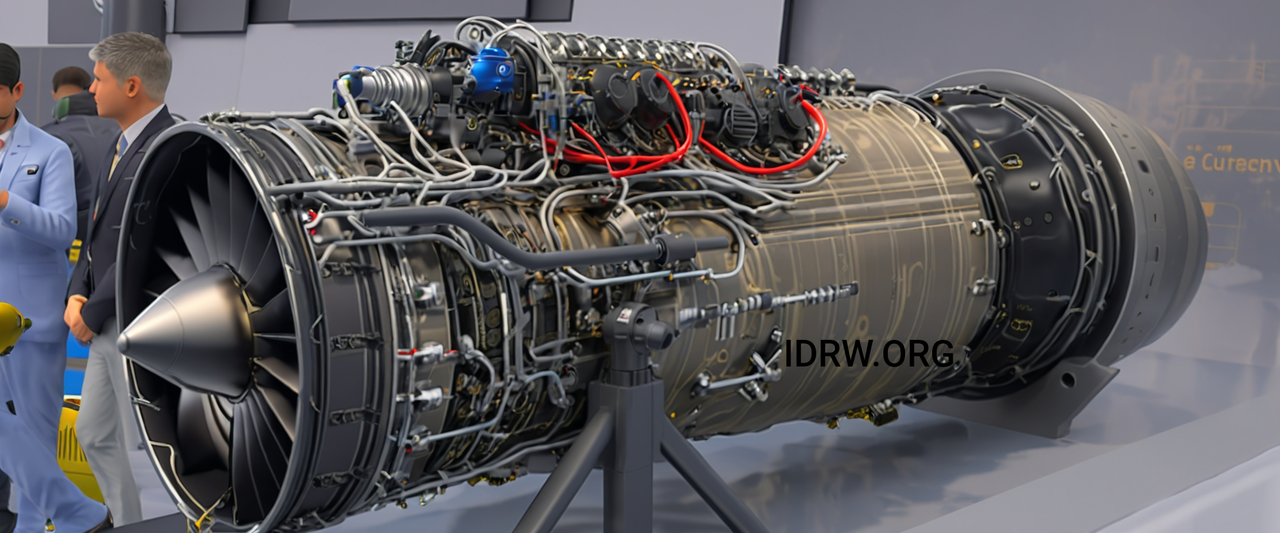SOURCE: RAUNAK KUNDE / NEWS BEAT / IDRW.ORG


The Gas Turbine Research Establishment (GTRE), a premier laboratory under India’s Defence Research and Development Organisation (DRDO), is on the verge of signing a transformative deal with an international Original Equipment Manufacturer (OEM) by the end of 2025 for the joint development of a 120kN thrust engine.
According to sources cited by idrw.org, the collaboration aims to deliver a next-generation aero-engine to power India’s Advanced Medium Combat Aircraft (AMCA), a 5.5-generation stealth fighter. The project marks a significant milestone in India’s quest for self-reliance in advanced aero-engine technology, with the engine’s core expected to roll out in four years and a full technological demonstrator, including an afterburner, slated for ground testing by the end of the fourth year.
Project Timeline and Development Phases
The joint development program, as outlined by idrw.org, follows a structured timeline to ensure the engine meets the stringent requirements of the AMCA Mk-2. Key milestones include:
- Core Rollout and Ground Testing (2029): The engine’s core, the critical component responsible for generating thrust, is expected to be completed within four years of the deal’s signing. By the end of 2029, a full technological demonstrator, incorporating an afterburner for enhanced thrust during combat scenarios, will commence ground testing. The first engine run, a pivotal step in validating the design, is also anticipated by this time.
- Airborne Testing (2032): Following ground tests, an additional three years will be dedicated to fine-tuning and testing the engine on a dedicated flying test bed. This phase, expected to conclude by 2032, will involve rigorous airborne trials to assess performance under real-world conditions, ensuring reliability and safety before integration with an AMCA prototype.
- Integration with AMCA and Certification: After successful airborne testing, the engine will be mated with one of the AMCA prototypes for further evaluation. Engine certification for initial production batches is expected to follow, paving the way for operational deployment. The entire process from deal signing to certification is projected to span approximately seven years.
Long-Term Vision and Upgrades
The 120kN thrust engine is designed with a production lifespan of nearly 30 years, during which it will undergo continuous improvements. According to idrw.org, the engine will see minor and major upgrades, including potential core enhancements to meet the evolving demands of future platforms. These upgrades could enable the engine to power sixth-generation manned and unmanned fighter aircraft, aligning with global trends toward versatile, high-performance propulsion systems for next-generation combat platforms.
The engine’s design prioritizes supercruise capability—sustained supersonic flight without afterburners—along with enhanced thrust-to-weight ratio, stealth features, and fuel efficiency. These attributes are critical for the AMCA, which is envisioned as a multi-role fighter capable of deep-penetration strikes, air superiority, and electronic warfare.
While the identity of the international OEM remains undisclosed, speculation points to leading global players such as Safran (France), General Electric (USA), or Rolls-Royce (UK), all of whom have extensive experience in developing high-performance aero-engines. The partnership will likely involve technology transfer, enabling GTRE to build on its experience with the Kaveri engine program while overcoming past challenges in achieving desired thrust and reliability.
The collaboration aligns with India’s “Make in India” and “Atmanirbhar Bharat” initiatives, emphasizing indigenous design and manufacturing with strategic international support. By co-developing the engine, India aims to bridge technological gaps, reduce dependence on foreign suppliers, and establish a robust domestic aero-engine ecosystem. The project is expected to involve Indian industry partners like Hindustan Aeronautics Limited (HAL) and private firms, fostering job creation and technological innovation.
NOTE: Article cannot be reproduced without written permission of idrw.org in any form even for YouTube Videos to avoid Copy right strikes. Websites doing illegal reproductions will get DMCA and Legal Notices.